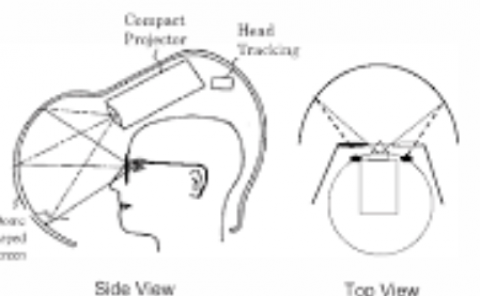Virtual Windshields: Merging Reality and Digital Content to Improve the Driving Experience
PubDate: May 2014
Teams: Mestrado em Multimédia
Writers: Michelle Krüger Silvéria
PDF: Virtual Windshields: Merging Reality and Digital Content to Improve the Driving Experience

Abstract
In recent years, the use of the automobile as the primary mode of transportation has been increasing and driving has become an important part of daily life. Driving is a multi-sensory experience as drivers rely on their senses to provide them with important information. In a vehicular context human senses are all too often limited and obstructed. Today, road accidents constitute the eighth leading cause of death. The escalation of technology has propelled new ways in which driver’s senses may be augmented. The enclosed aspect of a car, allied with the configuration of the controls and displays directed towards the driver, offer significant advantages for augmented reality (AR) systems when considering the amount of immersion it can provide to the user. In addition, the inherent mobility and virtually unlimited power autonomy transform cars into perfect mobile computing platforms. However, automobiles currently present limited network connectivity and thus the created augmented objects are merely providing information captured by in-vehicle sensors, cameras and other databases. By combining the new paradigm of Vehicular Ad Hoc Networking (VANET) with AR human machine interfaces, we show that it is possible to design novel cooperative Advanced Driver Assistance Systems (ADAS), that base the creation of AR content on the information collected from neighbouring vehicles or roadside infrastructures. As such we implement prototypes of both visual and acoustic AR systems, which can significantly improve the driving experience. We believe our results contribute to the formulation of a vision where the vehicle is perceived as an extension of the body which permeates the human senses to the world outside the vessel, where the car is used as a better, multi-sensory immersive version of a mobile phone that integrates touch, vision and sound enhancements, leveraging unique properties of VANET.


